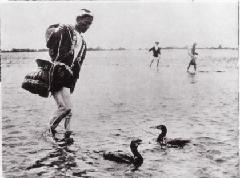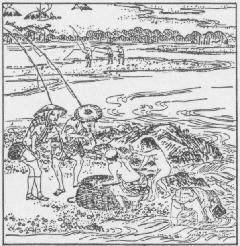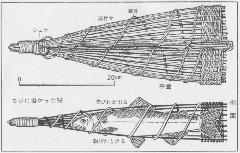Ayu fishing in the Tama River
Tama River midstream Ayu fishing
Inagi City is located in the middle reaches of the Tama River and has been home to many River fishing Many kinds of fish that live in the middle reaches of the Tama River were a valuable food source for people in the past. Sweetfish in particular have a high commercial value, and various fishing methods have been developed. Ayu fishing There are the following: Fishing rods and Fishing by Fishing method , Bullet hey network , Casting a Net , Wait Chi network , Substitute net etc. Net fishing , Box mirror or Fishing vessel Using Thrust tree Fishing method ,and Cormorant fishing is.
The history of sweetfish fishing in the Tama River
Although the fishing of sweetfish in the Tama River was mentioned in documents from the Kamakura period, it was not until the Edo period that it became famous, and it was brought to Edo Castle. Ayu delivery It started when the Eighth Shogun Yoshimune teeth Goryukawa Saying that Business At one time, fishing other than ayu fishing was prohibited. Successive shoguns, Emperor Meiji, and members of the imperial family have frequently visited the Tama River to enjoy ayu fishing. After the Meiji period, the Tama River became a free fishing ground, Houseboat The fishing of sweetfish by cormorants also developed. Cormorant fishing began around this time and continued until the early Showa period. Yotsuya , Yoshimasa from Cormorant fisherman The cormorant fishing was held at Omaru, Higashinagumanuma, Oshidate and Yanokuchi in the Tamagawa River. Most of the fishing was done during the day. Walking Then, one cormorant fisherman uses two cormorants (sea cormorants), Seko (Two people pulling the net) Cormorant fishing net Cormorant fishing was carried out by pulling a fishing pole. This cormorant fishing was observed from a houseboat.

Ayukago

Cormorant fishing on the Tama River

Ayu fishing (Edo Meisho Zue)

Ayu net fishing using moji











